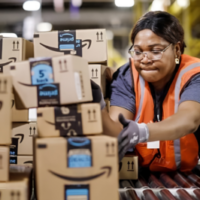Workers who are providing the critical services on which everyone relies are facing dire health and safety hazards during the COVID crisis. These threats are endangering millions of workers and the broader public, since unsafe workplaces during the pandemic put customers, patients, workers’ families, and everyone at risk. Already, tens of thousands of workers have fallen ill at work and hundreds have died, including workers in hospitals, first response, nursing homes, meat and poultry plants, grocery stores, warehouses and mass transit. And the hazards will only grow worse as states start to re-open their economies in the coming months.
The workforce in many of these industries, including food processing, supermarkets, warehouses, and nursing homes, are disproportionally workers of color. Workers in these industries are underpaid, lack health benefits, and have few worksite protections. And due to systemic inequalities leading to inadequate access to health care, workers of color are already at increased risk of serious complications should they become infected with COVID-19.
Unfortunately, the federal agency in charge of ensuring that employers provide safe conditions and protect workers from serious hazards—the Occupational Safety and Health Administration (OSHA)—has abdicated its responsibility for protecting workers. OSHA is not even requiring that employers follow the specific Centers for Disease Control and Prevention (CDC) guidance for employers. Existing worker protections are grossly inadequate to ensure safe workplaces and protect workers who speak up about hazards.
States and cities must step in to protect workers—and many are starting to do so.
This policy paper outlines recommended policies that states and cities should adopt to protect workers and respond to the crisis. All of the policy menu that we detail can be adopted by states—through executive action by governors or through legislation—and much of it can be adopted by local governments through municipal ordinances or orders.
Background
In this COVID-19 pandemic, protecting worker health is central to protecting public health. All workers who are on the job during this pandemic—from workers in the health care industry and emergency responders, to those working in supermarkets, delivery, meat and poultry processing, agriculture, janitorial jobs, pharmacies, warehouses, factories, transportation, sanitation, and all other essential workplaces—must be protected from disease transmission. This in turn will protect the broader public.
Worker health is in crisis in this pandemic. OSHA is failing in its responsibility to ensure that employers keep workers safe on the job during the pandemic. OSHA has not issued any enforceable COVID-19-specific requirements, practices, or policies that employers must implement to protect workers. OSHA and CDC have issued voluntary guidelines recommending policies and procedures that employers should implement to keep workers safe. These guidelines, however, are just that—they are advisory to employers. Employers can choose to follow the federal guidance or ignore it. Despite legal petitions and calls to OSHA from legislators, OSHA has so far not issued a standard with mandatory protections that employers must implement to protect workers from COVID-19.
The lack of mandated protections at work has resulted in thousands of workers falling ill from exposure at work, and many have died. Although CDC recommends that the public practice social distancing and wear masks when outside the home, employers in non-health care workplaces are not required by OSHA to follow these guidelines, and many are refusing to offer even these basic protections to workers. There are meat and poultry plants, for example, where hundreds of workers are infected because of transmission at work, where companies did not implement social distancing recommendations or provide protective masks and face shields. Because the companies failed to implement very basic measures to prevent the virus from spreading in the workplace, not only are workers getting sick and dying from exposure at work, but this has dramatically increased the spread of the virus into the community.
To protect themselves and the public during the pandemic, workers must be able to speak up and raise concerns about their safety and their lack of protection. Their voices are critical to ensuring that our workplaces and communities are safe. But current federal protections are weak and do not provide sufficient protection against retaliation and discrimination for workers who speak up.
The federal government has abandoned its responsibility to assure that workers and the general public are safe in this pandemic. As the number of workers infected with and dying from this disease continues to grow, and as we see spread in communities where workers live, it is clear that a voluntary approach to worker safety is not mitigating this public health disaster. Communities of color are paying the price for this federal failure. It is therefore crucial that state and local policymakers step up to protect workers and the general public in this pandemic.
States and Cities Have the Authority to Respond
Both states and municipalities have broad power to protect public health and protect workers. Federal OSHA law does not preempt or limit states and cities from acting to protect workers from the threat of COVID-19 transmission in the workplace. Since OSHA has not adopted a federal standard that deals with the workplace health and safety risks associated with COVID-19, states remain free to adopt their own.[1] Nor does any federal law preempt state and local laws that protect whistleblowers.[2] States and cities have long had such protections[3]—though most are too narrowly written to adequately protect workers, especially during this crisis.
Much of the policy menu that we detail can be adopted by either states or local governments:
- Governors, using their emergency public health powers, can mandate much of the menu by executive order;
- State legislatures can adopt all of it by statutory action; and
- Local governments, through local ordinances or in some cases through mayoral or health department orders, can adopt many of the recommended protections, although the scope of local authority to do so varies from state to state. Note, however, that cities do not have authority to adopt the components addressing state workers’ compensation protection of COVID-related illness and unemployment insurance protection for workers refusing to work under unsafe conditions.
Model Policy Language & Explanation
- This policy proposal is meant to be modular—so that governors, legislatures, and local governments can adopt and adapt pieces of it, tailoring them in accordance with their local authority and integrating them with existing state and local standards and protections.
- All of the outlined components are, however, crucial—and no state currently fully and adequately protects worker health and safety.
- NELP is available to work with advocates in developing specific language for state or local policies. Please contact dberkowitz@nelp.org or psonn@nelp.org.
Download the full policy brief to read more.
Endnotes
[1] 29 USC 667(a) of the OSHA Act provides “Assertion of State standards in absence of applicable Federal standards. Nothing in this chapter shall prevent any State agency or court from asserting jurisdiction under State law over any occupational safety or health issue with respect to which no standard is in effect under section 655 of this title.”
[2] Under the OSHA Act, only OSHA standards issued under Section 6 of the Act preempt state regulation. See 29 USC 667(a). Since the OSHA Act’s anti-retaliation protection, Section 11(c), is a statutory provision, it does not preempt state whistleblower protections.
[3] Examples include N.Y. Labor Law §§ 740, 741, and Cal. Labor §§ 1102.5 to 1105.
[4] 29 USC 667(a)





